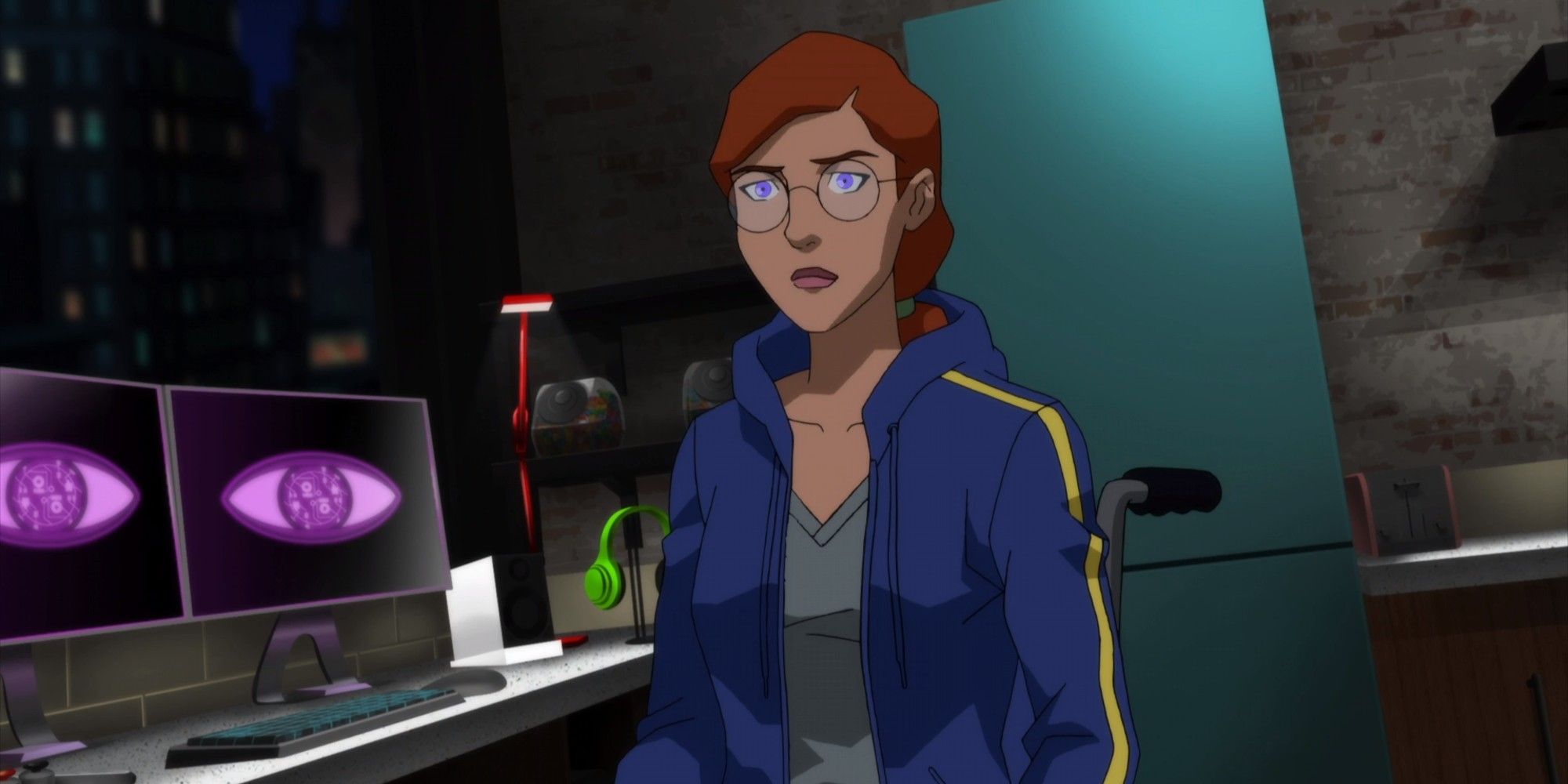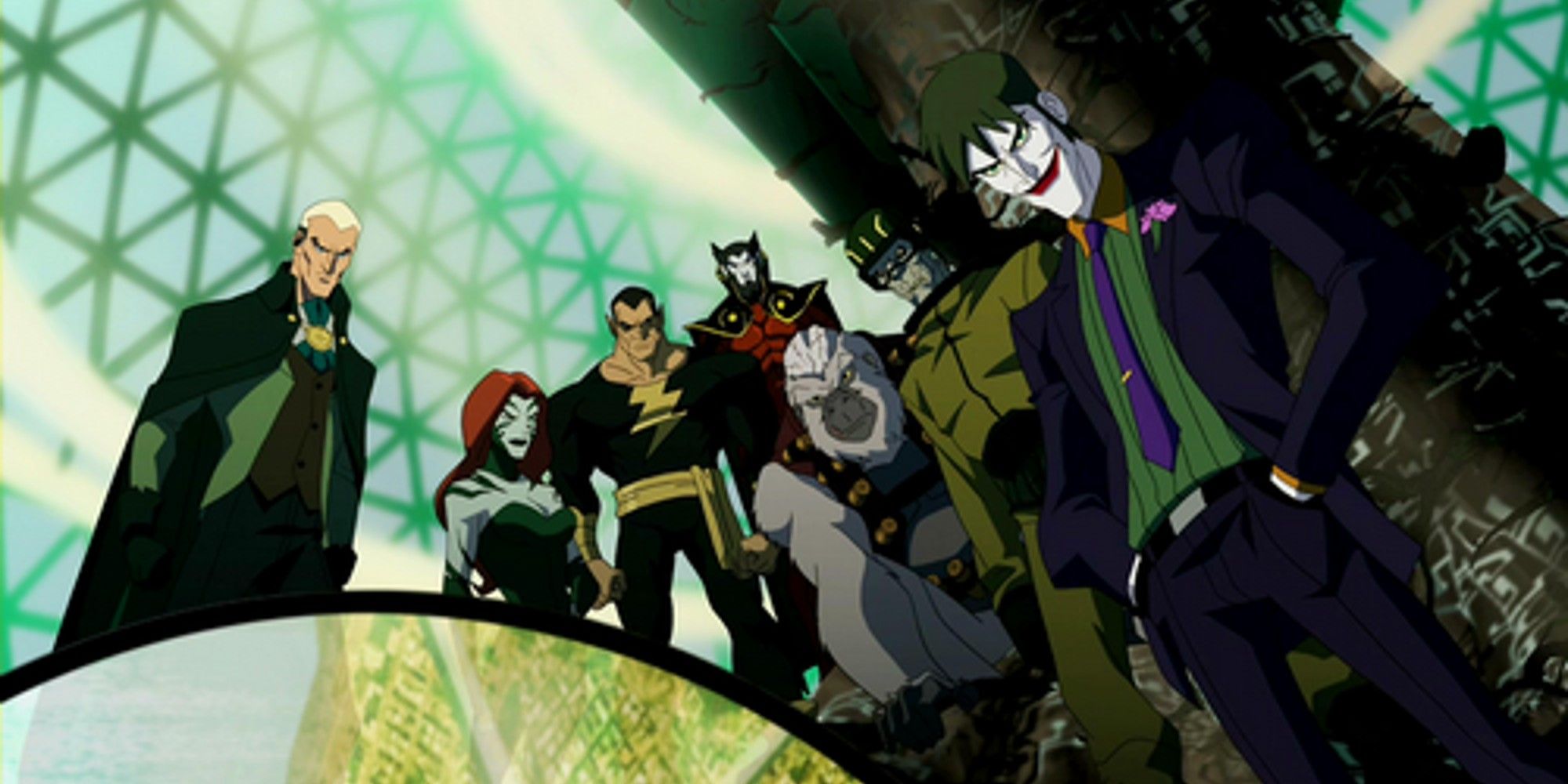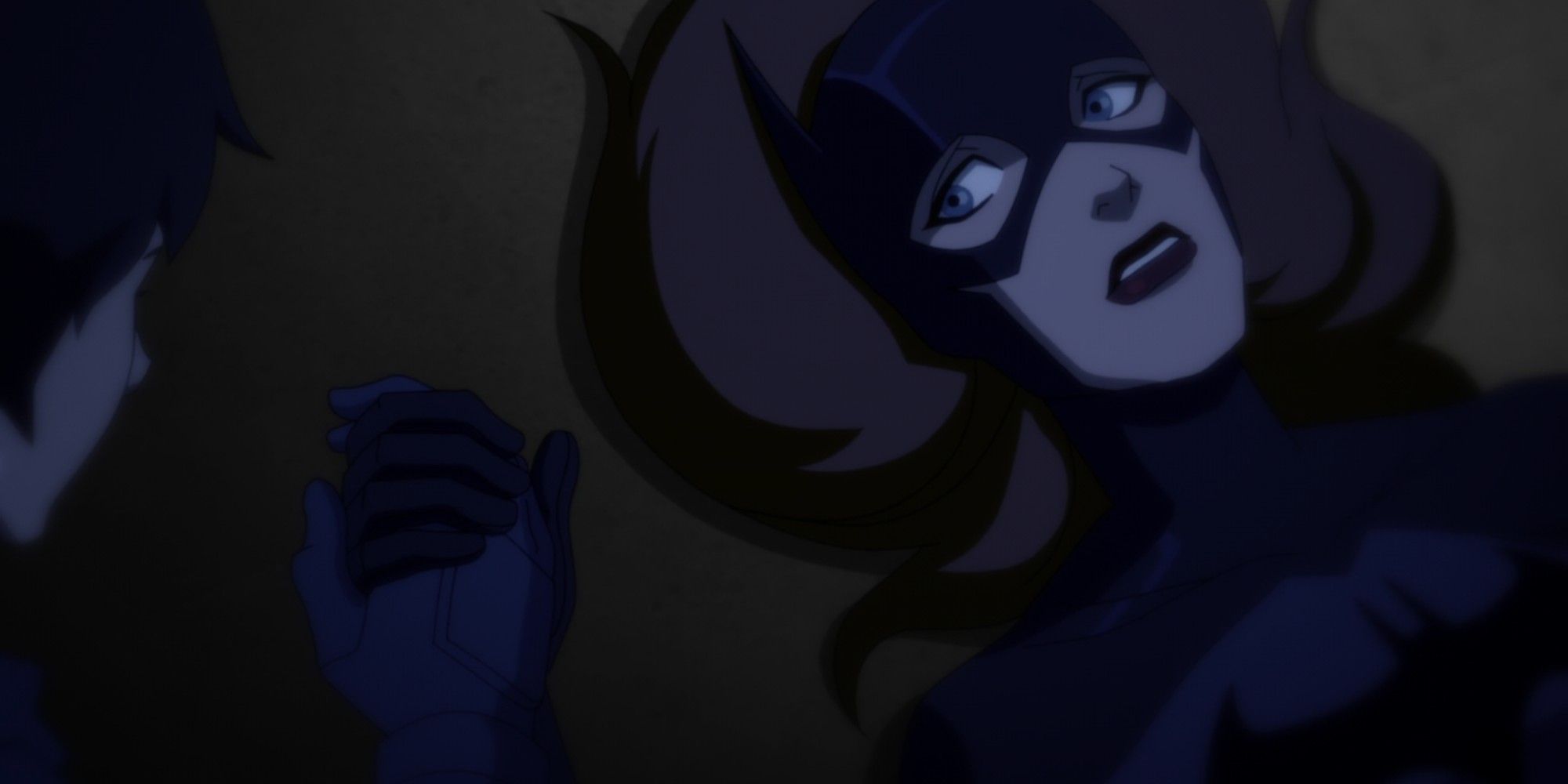
WARNING: The following contains spoilers for Young Justice: Phantoms, streaming now on HBO Max.
A hallmark of the Young Justice series has been time time skips between seasons, during which the world of Earth-16 can go through drastic changes. One such change happened between the second and third season, when Batman's team of vigilantes was expanded to include characters like Orphan and Oracle. The latter of the two appeared in previous seasons as Batgirl, but sometime between Invasion and Outsiders, something happened that put Barbara Gordon in a wheelchair.
The latest episode of Phantoms, "The Lady, or the Tigress?," finally gave audiences that backstory. In doing so, the series not only changed the problematic roots of one of the biggest moments in Barbara's life, but tied it into the story of Orphan, creating a new relationship between two key members of Batman, Incorporated.

Oracle's story begins, as it did in the comics, with the Joker. Years ago, during the first season episode "Revelation," Joker was part of the Injustice League, a group of villains who sought to extort a fortune out of the world via an international army of giant killer plants. They were defeated by the Justice League, but they were never actually meant to succeed. The point of the Injustice League was to be a decoy, to give the heroes a fake villain team to eliminate and distract them from the real actions of Young Justice's true cabal of bad guys, the Light.
At some point between Invasion and Outsiders, Joker found out about the deception and was not pleased about being manipulated. He swore vengeance on the Light and threatened to massacre the United Nations, since two of the organization's members -- secretary general Lex Luthor and Markovian ambassador Zviad Baazovi -- were members of the Light. In response, the head of the League of Shadows, Lady Shiva, sent her daughter Cassandra on her first mission as an assassin: to kill the Joker.
The episode then cuts to the United Nations, where the Clown Prince of Crime is holding the building hostage with an arsenal of bombs armed with his signature Joker venom. His plan is thwarted rather quickly by Batman, Incorporated and, rather than risk the wrath of the Dark Knight, Joker flees. It's here where Cassandra makes her move, charging at Joker with a katana. Batgirl spots her and shoves the Joker out of the way just in time, saving the Ace of Knaves but taking the hit, severing her spine.

While the Joker is captured by the other members of Batman, Inc, Cassandra is horrified at having grievously injured a hero. As she lies bleeding on the ground, Batgirl looks to the young assassin and tells her she didn't do this to save the Joker; she did this to save Cassandra. The moment creates a bond between the two heroines, one that explains Oracle's dogged need to rescue Cassandra from the clutches of the Shadows. Beyond that, it addresses one of the most common criticisms of Barbara Gordon's backstory.
In the comics, Batgirl's paralysis storyline happened in the controversial graphic novel The Killing Joke. In it, the Joker ambushed Barbara at her home, shooting her through the spine then stripping her naked and photographing her, all part of an elaborate plan to drive her father insane with grief. The Killing Joke has been the subject of much criticism since its release (including by its writer, Alan Moore) for its callous treatment of Barbara, victimizing and mutilating her as a way to emotionally hurt another male character -- what writer Gail Simone would later call the problem of "Women in Refrigerators." In The Killing Joke, Barbara's pain and suffering aren't even her own, they belong to Commissioner Gordon and Batman.
Young Justice addresses this by turning Batgirl's paralysis into an act of heroism. Here Barbara isn't at the mercy of the whims of other characters, she's in charge of her own destiny and makes the choice to save Cassandra's soul at the cost of her own mobility. It's a powerful moment that bonds the two heroines together and makes the story of "The Lady, or the Tigress?" much more resonant.
0 Comments